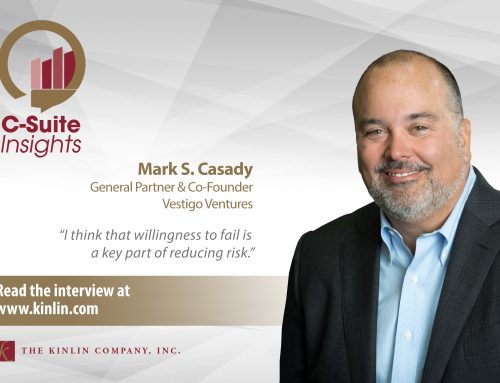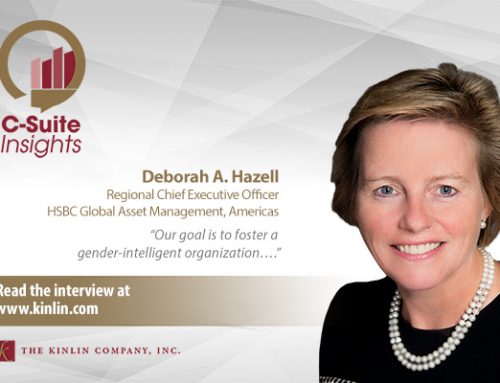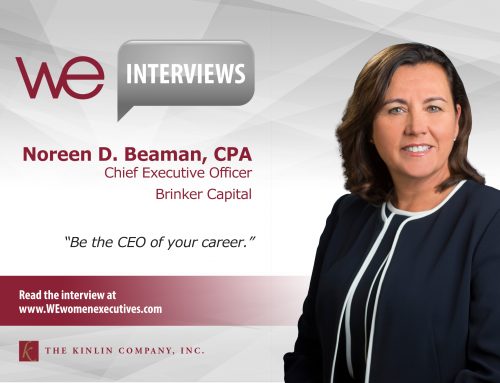 David L. Giunta
David L. Giunta
President & CEO, U.S. & Canada
Natixis Global Asset Management
As president and CEO of the United States and Canada for Natixis Global Asset Management, David L. Giunta is responsible for distribution in the U.S. and Canada as well as oversight of the firm’s investment managers in the U.S. and Canada.
The firm has some $475 billion in assets under management in the U.S. and Canada and employs 1,500 individuals in the U.S.
I recently sat down with Giunta to talk about the trends he’s watching and his commitment to increasing diversity in the workplace.
A sense of the long-term picture
Giunta has many years of experience in the asset management field –fourteen years at Fidelity and nine at Natixis – and I was eager to know what keeps him up at night. What trends are you most concerned with these days and why, I asked.
“I’ll start with the passive/active debate that’s going on right now. Over the last several years, passive has been mostly in favor, and a lot of active managers are nervous. Seeing the flows that are out there, however, I think the trend creates tremendous opportunity for a firm like ours, because people are scrutinizing their active managers and their allocations to active managers a lot more closely than they did in the past. They’re saying, ‘If I’m going to pay those fees, I want a truly active manager, someone who’s not just hugging the benchmark but who can also differentiate himself and add alpha over time.’ Our affiliates do that, so we’re very well positioned within that space. I don’t think it’s a question of passive or active – they’re going to coexist – and I think over time it will play into our strengths.
“The second trend is ESG. If you look at what’s happening overseas, there’s tremendous interest in ESG investing. Our Paris-based affiliate, Mirova, manages about $9 billion, and we’ve seen a lot of interest in ESG investing in Europe for years. I think we’re probably a little bit behind here in the U.S., but we’re going to catch up. When we survey investors, we’re finding that Millennials and women in particular are very, very interested in ESG-type investing, with more than 80 percent saying it’s important for their investments to match their personal values. Investors also overwhelmingly tell us they want more socially responsible investment options in their retirement plans, and that they would actually save more if those options were available.
“To address that demand, we launched the industry’s first series of ESG-focused target date mutual funds, so we’re building a track record there. It’s a long-term investment for us. We believe that when you look at 457 plans, states, municipalities, 403(b) plans, and all the universities and colleges, there’s a market that’s ripe for an offering like this within their retirement plan. And on the 401(k) side, we think a lot of the technology companies, which have a heavy population of Millennial employees, will find an ESG offering very attractive as well. Companies are always looking for ways to encourage their employees to save, and this is a great way to do that while also positioning the firm as a socially responsible employer.”
There is so much talk right now around ESG – how will Natixis differentiate themselves?
“This trend is fairly new in the U.S., but it’s not new to Natixis. Our Mirova affiliate has a thirty-year track record in ESG and a highly experienced team, and we think that sets us apart. We also took a unique approach in that we launched a target date mutual fund, so we were the first ones in that market, and we’re still the only ones building a track record in that space right now. We’re really excited about that.
“But despite all the buzz around ESG, there hasn’t been as much activity in terms of flows in assets yet. To attract more assets, you have to prove that you do well, because investors don’t want to give up performance. They want to feel good about what they’re investing in, but firms still have to prove that they can provide a good return. That’s why a track record is so important.”
A focus on diversity and inclusion
After learning a bit about Giunta’s current focus, I decided to shift gears and inquire about his board work. I was particularly interested in his work with The Partnership, an organization that helps corporations and institutions “attract, develop, and retain talented multicultural professionals at all levels of leadership.” What drives your involvement in this organization, I inquired.
“I got involved in The Partnership through one of our mutual fund board of trustee members. I had a conversation with their CEO Carol Fulp and Ralph Martin, who’s now the chairman of the board, and I was extremely impressed. I love their mission because they work with companies as well as individuals. They’re trying to prepare companies to create an environment of inclusion, and they’re also working with individuals to help them deal with the unique circumstances that a person of color may confront within an organization. They tackle the challenge from both sides, which makes for better outcomes.
“Over time we’ve also had them assist us in securing internship candidates to help us build a more diverse talent pipeline, and we have employees involved in their leadership development programs as well. It’s a great organization – they do a nice job.”
How has Natixis fared in addressing issues of gender equity and balance within the firm?
“We’ve made good progress, but where we struggle, like the rest of the industry, is in sales. Our salesforce is still primarily male, but we are about 54 percent male and 46 percent female across the balance of the U.S. distribution organization, which totals about 450 people. And of my 11 direct reports here in the U.S. right now, three are women: Marina Gross, Executive Vice President of the Portfolio Research and Consulting Group; Beatriz Pina Smith, EVP & CFO; and Maureen O’Neill, Senior Vice President of Human Resources. We also have women in key roles across the global organization, including Bev Bearden, our Deputy CEO.
“Our business is incredibly people-driven, so we are always competing to attract and retain the best talent. We created a Women’s Leadership Initiative two years ago to provide networking and development opportunities for women, which has had a tremendous response from both women and men. We were among the first companies to offer a student loan repayment benefit, and this year we also expanded our flexible work arrangements. We always try to structure things like our mentoring program, training opportunities and benefits package to help make Natixis a place where women can thrive.”
A commitment to community
In closing, I asked Giunta if there was anything about Natixis that he particularly wanted people to know.
“It doesn’t make the papers very often, but we are really proud of the community commitment that’s woven into our culture. We give all employees two days off a year to volunteer, and we sponsor a matching gift program as well. But the centerpiece of our community program is really a group of approximately 10 core charities that we back, and our employees are very generous in their support, both through donations and volunteering. We provide support for the Home for Little Wanderers, Best Buddies, Boston Medical Center, St. Francis House, Elizabeth Stone House, Strong Women Strong Girls, Ellis, Winthrop School and the Pine Street Inn. It’s a good mix and such an important part of our culture.
“The core charity program is designed to get employees excited and engaged with the charities and invested in their success. We invite representatives from all the charities to come and tell their stories and meet with employees, and last year we had over 80 percent of our employees make a donation through the campaign, which is remarkable. As a result, our employees have been recognized as the “Most Generous” in the region by the Boston Business Journal for six years in a row.
“Working with people who are less fortunate, or just going through a rough patch, helps to keep us grounded, and it reminds us that we are in the business of helping real people with real families to be financially secure. It’s also interesting that our community programs have increasingly become a competitive advantage in recruiting, especially for young people. Just like they want their investments to match their values, people want to work for a company that stands for something more than profits, and they want to be proud of the name on their business card. We try to nurture that culture so people can be proud to say they work for Natixis.”
![]()





